
Zaha Hadid has curated and designed an exhibition at Galerie Gmurzynska Zurich that juxtaposes her own work with early twentieth-century Russian art pieces.
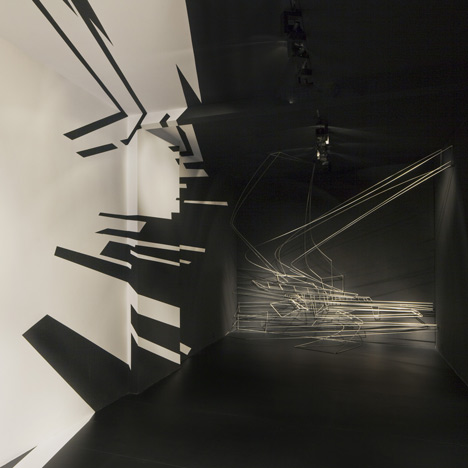
Entitled Zaha Hadid and Suprematism, the show follows Hadid’s continuing interest in the Russian avant-garde, first explored with her graduation project in 1976-77.
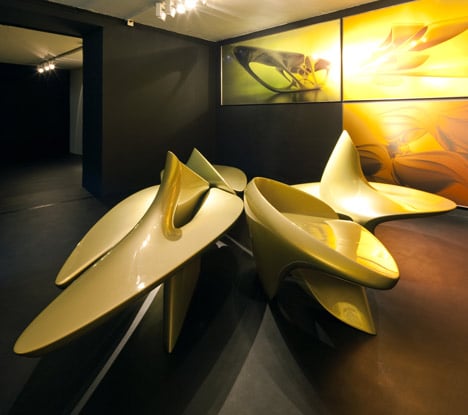
See all our stories about Zaha Hadid Architects in our special category.
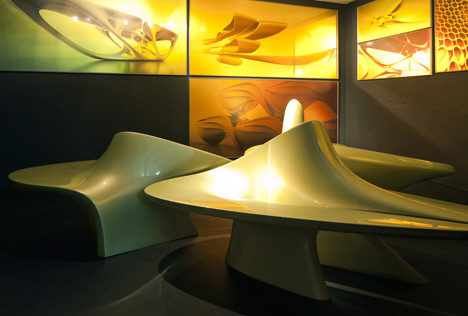
Photographs are by Martin Ruestchi.
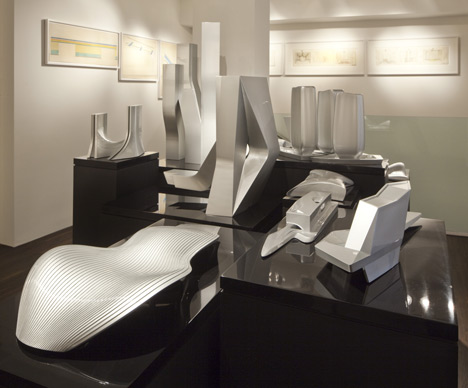
Here’s some more information from the gallery, followed by a text by Patrik Schumacher of Zaha Hadid Architects:
An exhibition curated by Zaha Hadid for Galerie Gmurzynska Zurich, completely transforming its gallery space and juxtaposing her designs with masterpieces of the Russian Avant Garde.
Zaha Hadid and Suprematism
Galerie Gmurzynska is pleased to announce the exhibition, Zaha Hadid and Suprematism. Drawing on Zaha Hadid’s formative inspiration from the masters of the Russian Avant-garde, the Pritzker Prize winning architect will both curate and design this historical exhibition.
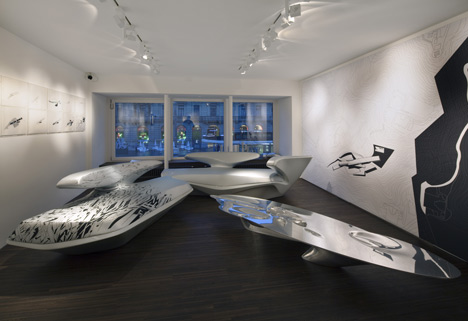
Engulfing Galerie Gmurzynska’s Zurich location, on the historic Paradeplatz, Hadid will create a new site specific transformative design installation in which the exhibition will take place. The show will juxtapose works in a variety of mediums by Zaha Hadid with highlights from Galerie Gmurzynska’s legendary collection of works from the Russian Avant Garde. Among the masterworks selected by Hadid for the show are pieces by Ilya Chashnik, El Lissitzky, Kasimir Malevich, Alexander Rodchenko and Nikolai Suetin. Together these pieces will show the incredible contemporary contributions Zaha Hadid has consistently made to the culture of our time, as well as the enduring influence and importance of the Russian Avant Garde.
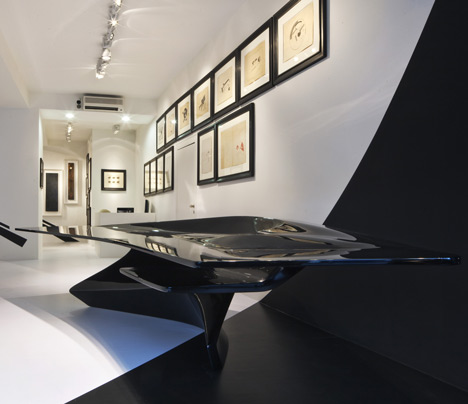
This exhibition will be the first to directly explore the connection between the work of Zaha Hadid and the Russian Suprematist artists of the early twentieth century. The link between Hadid and these artists has spanned her entire career, beginning with her 1976-1977 graduation project for the Architectural Association, Malevich’s Tecktonik, which took the visual deconstructed influence of Malevich and used it as the starting point for a London hotel design. Following in this interest, in 1993 Zaha Hadid was asked by the Solomon R. Guggenheim Museum in New York to create an exhibition design for their encyclopedic show of the Russian Avant-Garde, The Great Utopia. Hadid was recently named one of the 100 Most Influential of People of 2010 by TIME Magazine.
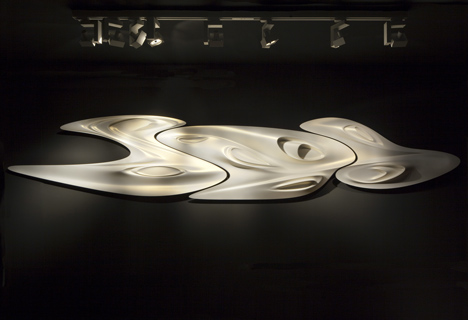
Specific highlights will include some of the last great works of the Russian Avant Garde left in private hands, such as Kasimir Malevich’s oil and canvas, Dissolution of a Plane, from 1917 and Alexander Rodchenko’s Composition No. 99, oil on plywood from 1920.
Opening in Zurich on June 13, the weekend prior to the 41st edition of Art Basel, Zaha Hadid will be present for the opening.
The Russian Avant-Garde
A glimpse back into the future By Patrik Schumacher, partner at Zaha Hadid Architects, noted architectural writer and theorist.
90 years ago the October Revolution ignited the most exuberant surge of creative energy that has ever erupted on planet earth. While some of the artistic seeds were present beforehand, they blossomed and proliferated thousand-fold in the first 10 years of the revolution.
This amazing firework of creative exuberance took off under the most severe material circumstances – fuelled by the idealistic enthusiasm for the project of a new society.
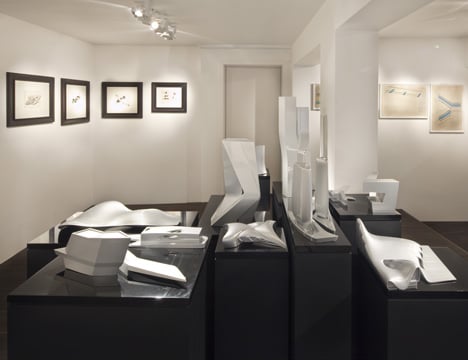
The pace, quantity and quality of the creative work in art, science and design was truly astounding, anticipating in one intense flash what then took another 50 years to unfold elsewhere in the world.
In art and design there is nothing of note during the 20th century that was not already experimented with during the first decade of the October Revolution – only at the end of the century the micro- electronic revolution opened up a whole new universe of possibilities that could not have been dreamed of at the beginning of the century.
The 1920s Avant-Garde not only anticipated the urbanist concept of the 1950s, but projects were designed that anticipated the mega-structure utopias of the mid-60s and the high-tech style of the 1970s.
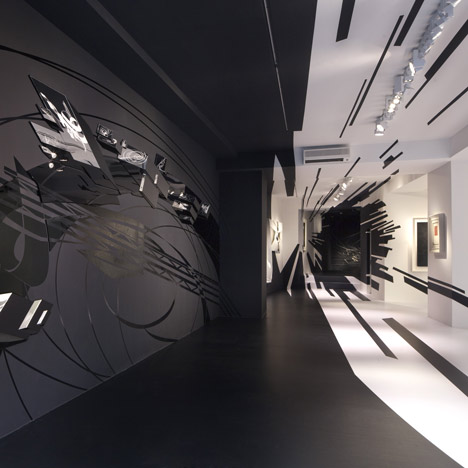
Leonidov’s 1927 project for the Lenin Institute was 50 years ahead of its time and his 1934 competition entry for the Soviet Ministry of Industry – a composition of different towers placed upon an urban podium – remains an inspiration for metropolitan architecture today. What is most refreshing about this project is the way these projects were embedded within an intense discourse promoted by exhibitions, academic institutions and public competitions.
These projects – in all their experimental radicality – had a real social meaning and political substance. But their originality and artistic ingenuity transcends the context of the grand Russian social experiment.
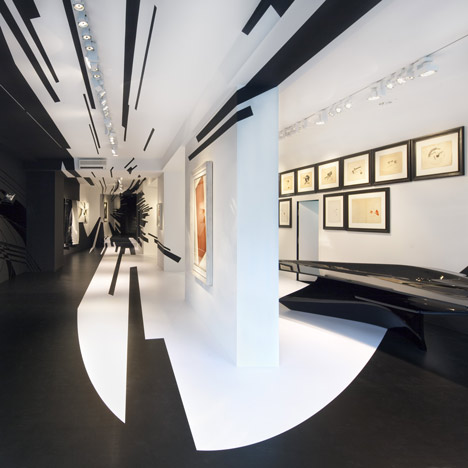
For instance Alexander Rodchenko’s amazing hanging sculptures are pure explorations of space which opened up a whole new sensibility – the sensibility of the Space Age – and grouped as a constellation produce one of the most sublime art experiences of all times.
It is a well established fact that the work of Zaha Hadid took its first inspiration from the early Russian avant-garde, in particular she directly engaged with the work of Kasimir Malevich.
Malevich stands here for the enormously momentous discovery of abstraction as a heuristic principle that can propel creative work to hitherto unheard of levels of invention. Mimesis was finally abandoned and unfettered creativity could pour out across the infinitely receptive blank canvass. Space, or even better the world itself, soon became the site of pure, unprejudiced invention.
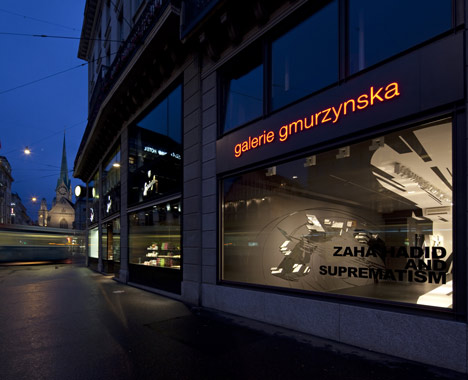
Malevich has been a pioneer of abstraction and a pioneer in directly linking abstract art with architecture via his seminal “tectonics”. It is interesting however, to observe that these tectonic sculptures, which were conceived as a kind of proto-architecture, were geometrically far more constraint than his compositions on canvas. The tectonics are dynamic equilibrium compositions that strictly adhere to the principle of orthogonality and they are composed by cubic volumes with adjoining surfaces, thus excluding interpenetration. These “cubist” restrictions characterized most of the modern architectural work in Russia and elsewhere.
Zaha Hadid’s work quickly disposed of these seemingly inviolate architectural principles and translated the warped and anti-gravitational space of Russian avant-garde painting and sculpture into her own unique architectural language. The inspiration came from the paintings of Malevich and Moholy-Nagy, El Lissitzky’s “Prouns” and Naum Gabo’s sculptures.





所有评论